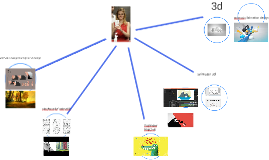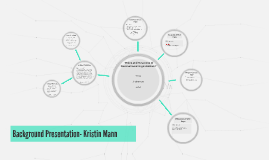Schedule Background Design
Transcript: strategic alignment Links schedule choices to organizational strategy so timelines reinforce priorities and make trade-offs visible for leaders. cross-functional coordination Provides a single reference that reduces miscommunication across teams and external partners, speeding coordinated decisions and handoffs. context and importance risk-informed planning Surfaces key constraints and assumptions early so risks and contingency needs are identified and incorporated into planning. transparency and accountability establishing the schedule background: purpose & scope Defines reporting cadence, decision points, and owners to improve transparency, enable timely escalation, and strengthen governance. defines the purpose, scope, and core assumptions behind the schedule; provides context for milestones, resources, and timeline decisions. a clear background creates shared understanding, enables better decision-making, reduces rework, and improves stakeholder communication. align priorities ensure tasks and stakeholder goals are ranked and synchronized so teams concentrate on the highest-impact work and avoid conflicting efforts. define clear milestones specify milestone names, expected outcomes, and acceptance criteria to make progress observable and reduce ambiguity in timing and deliverables. key objectives supported by the schedule background facilitate resource planning capture resource needs and timing windows to guide staffing, budgeting, and procurement decisions and to prevent capacity bottlenecks. enable risk-aware flexibility embed contingency buffers and decision points so the schedule can adapt to risks while preserving critical milestones and delivery commitments. executive sponsors — strategic oversight Executive sponsors set strategic priorities, approve scope and major milestones, secure funding, and resolve escalations that affect the schedule background. project manager / scheduler — schedule ownership project manager / scheduler creates and maintains the baseline schedule, tracks the critical path, coordinates updates across teams, and communicates schedule changes to stakeholders. functional leads / resource managers — execution inputs Stakeholders and Roles functional leads and resource managers provide task estimates, assign resources, identify constraints, and report progress and capacity impacts that feed into the schedule background. pmo / governance — standards & control pmO and governance enforce scheduling standards, maintain the schedule repository, perform quality checks, and manage change-control processes to keep the background accurate and auditable. stakeholders / end users — validation & feedback stakeholders and end users validate requirements, participate in milestone reviews, provide acceptance, and raise operational risks or dependencies that influence schedule adjustments. Schedule Background Design Background styles and color palettes tailored for weekly and monthly schedules and timetables Historical Development and Rationale Dependencies and Critical Paths sequence of major dependencies, critical-path activities, and timing constraints that shape the schedule background key decisions and milestones that shaped the current scheduling approach, showing how problems were identified and solutions adopted over time. procurement (week 5–10) deployment & handover (week 23–24) build & integration (week 11–18) initiation (week 1–2) place orders for long‑lead items and finalize vendor contracts; procurement lead times are a hard timing constraint that determines when the build phase can begin. execute cutover and transfer to operations after all acceptance criteria and approvals are met; deployment windows may be limited by business blackout dates or coordination constraints with operations teams. execute construction/development and integrate subsystems; this activity is the primary critical path—it depends on delivered components and completed designs, and any delay here directly shifts go‑live. define scope, secure initial approvals, and collect input requirements; design cannot begin until scope sign-off is complete, so delayed approval shifts subsequent phases. design (week 3–6) testing & validation (week 19–22) complete detailed designs and obtain formal design approval; design freeze is required before procurement and build start, making design review cycles a potential critical-path risk. perform system testing and user acceptance tests; testing depends on finished integration and is constrained by test environment availability and stakeholder windows for acceptance sign‑off. process standardization optimization & lessons learned tool implementation initial assessment adopted standardized milestone templates and formal approval workflows to reduce ambiguity and speed decision-making. collected performance metrics and feedback, refined lead times and buffers, and adjusted contingency rules to address recurring bottlenecks. implemented a centralized scheduling tool to enable

















